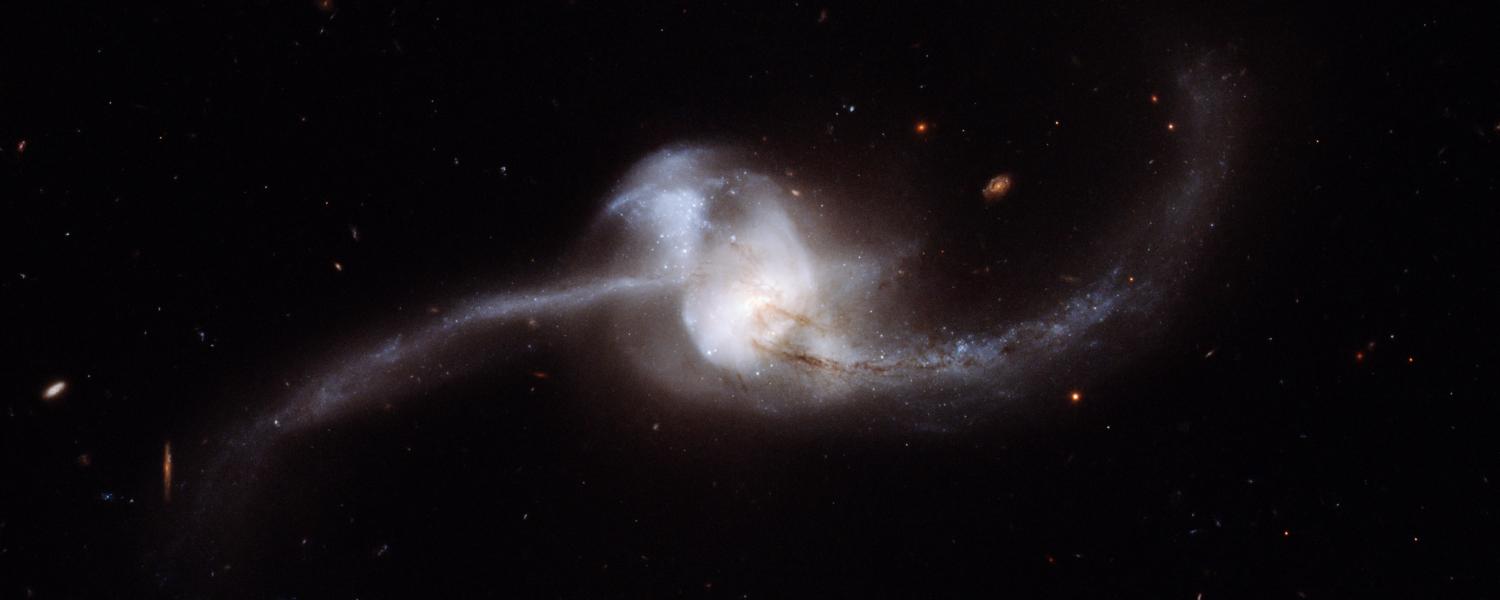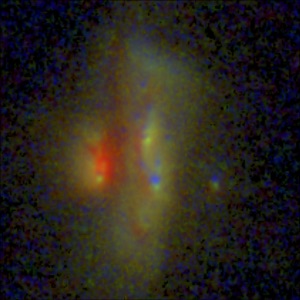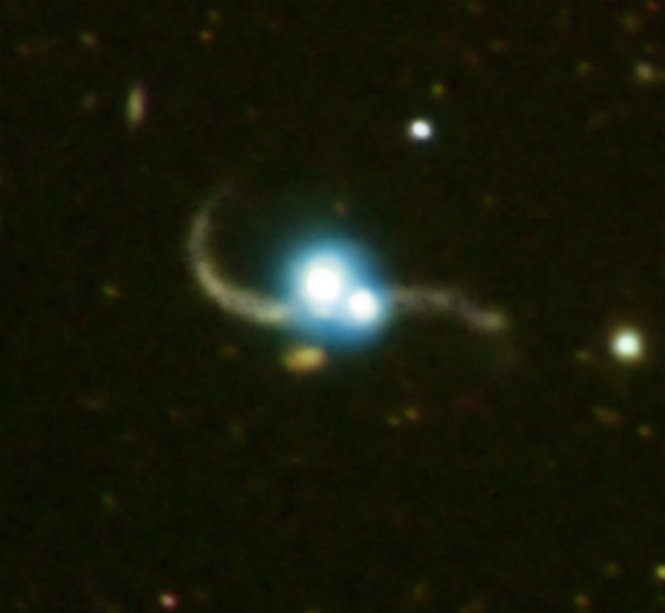When Evenly Matched Galaxies Collide, They Ignite 2 Blazing Quasars

DENVER — Violent collisions between two galaxies can push both galaxies' black holes into becoming quasars, some of the brightest objects in the universe.
New research reveals that the most dramatic collisions are more likely between galaxies that are roughly the same size as one another; when one galaxy massively outweighs the other, only a single black hole is likely to light up as a quasar.
When two galaxies merge, their gas, dust and stars all mix together. Eventually, the supermassive black holes at the cores of each galaxy will combine into one behemoth at the heart of the merged galaxy. Before that happens, however, much of the newly churned material will be gravitationally pulled toward one or both of the supermassive black holes, causing them to blast out electromagnetic radiation. [The X-Ray Universe: Chandra X-Ray Space Observatory Pictures]
"This has long been predicted to be a spectacular event," Scott Barrows told the press Wednesday (June 6) during the 232nd annual meeting of the American Astronomical Society. Barrows, a researcher at the University of Colorado Boulder, used NASA's Chandra X-ray Observatory to hunt for merged galaxies with quasars at their hearts. He and his colleagues found that the most-violent mergers more frequently resulted in new galaxies with two quasars at their centers. However, disproportionate mergers, in which one galaxy massively outweighed the other, had only a single, brightly radiating quasar and a hidden black hole.
"In both cases, they reveal signs of galaxy mergers but in two very different types," Barrows said.
Off-kilter galaxies

While some galaxies are easy to identify as merged, thanks to two half-formed parts sticking out at odd angles, others can be more challenging. The bright quasars can be easy to spot as singles, but more challenging to separate when they are close together.
Get the Space.com Newsletter
Breaking space news, the latest updates on rocket launches, skywatching events and more!
That's where Chandra& comes in. According to an earlier presentation at the conference by Barrows' co-author Julie Comerford, also at CU Boulder, Chandra provides the best separation possible when viewing the distant objects. Barrows and his colleagues started by analyzing images of galaxies captured by the Sloan Digital Sky Survey, calculating where the center of the newly formed galaxy should be. Then, they used Chandra to determine where the center actually lies.
"We traditionally expect quasars to be at the center of galaxies," Barrows said. "If you see [a quasar] that's not there [at the center], that implies that a merger has taken place."
An off-center quasar suggests that a supermassive black hole from the center of one of the galaxies is lurking in the background, skewing the galaxy's center of mass. Supermassive black holes lurk at the heart of most galaxies, including the Milky Way, and can weigh billions of times as much as the sun. The second black hole, in such an instance, most likely didn't receive enough fuel to light up as a quasar, Barrows said.
And sometimes, researchers spot two evenly matched quasars.
"For galaxies with only one quasar, we almost always see them as having very large mass ratios with unequal size," Barrows said. "With two quasars, it's not as simple. They do tend to, overall, have more comparable sizes."
The astronomers found that 9 out of 10 newly merged galaxies with only a single quasar came from lopsided mergers, in which one galaxy dramatically outweighed the other. Two-thirds of the newly merged galaxies boasting a pair of quasars came from a marriage of equals.
These unequal mergers were far more common than the more-balanced collisions, happening about 50 times more frequently, Barrows said.

In an unequal collision, it appeared that it was random which black hole flipped on and which remained quiet, he said. Neither the supermassive black hole from the larger galaxy nor the smaller one seemed to be favored.
When similar-size galaxies merge, the bonding is more likely to be violent as the two massive objects tug on one another. The result can be strange tidal tails or asymmetric clouds of material ripped from one galaxy toward the other. The gravitational forces then feed gas and dust to the pair of supermassive black holes.
Using Chandra to find the quasar and comparing that with the new galaxy's center of mass proved crucial, the researchers said. As researchers comb through catalogs in search of mergers, it's easy for them to pick out the ones that are visibly obvious mergers. But it is easy to overlook the less obvious collisions, which Barrows said "would be missed by most selections of mergers."
The next step for the researchers will be to focus on how the smashup of the supermassive black holes affects the galaxies themselves, including how these events create and destroy stars, he added.
Follow Nola Taylor Redd on Twitter @NolaTRedd or Google+. Follow us at @Spacedotcom, Facebook or Google+. Originally published on Space.com.
Join our Space Forums to keep talking space on the latest missions, night sky and more! And if you have a news tip, correction or comment, let us know at: community@space.com.

Nola Taylor Tillman is a contributing writer for Space.com. She loves all things space and astronomy-related, and enjoys the opportunity to learn more. She has a Bachelor’s degree in English and Astrophysics from Agnes Scott college and served as an intern at Sky & Telescope magazine. In her free time, she homeschools her four children. Follow her on Twitter at @NolaTRedd









